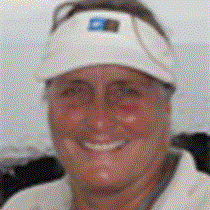Isabela & Fernandina Islands
WOW! That is how I must start a report about today – and no doubt I will end likewise. This has been an absolutely amazing day in the enchanted islands of Galápagos. When, even before breakfast, we had spotted three species of whales, and three pods of several hundred dolphins each, not to mention numerous large mobula rays, several endangered and rare, endemic dark-rumped petrels and four or five other species of seabirds, I knew that it was going to be a record breaker of a perfect Galápagean day! So, if I can just calm down enough, let me tell you about it…
When I headed to the bridge just before 0630, I could see that conditions were excellent for our marine mammal search. Clear azure skies, flat calm sea and a delicious breeze. The early birds among our guests soon joined us with their binoculars and we watched the seabirds and giant mobula rays first. Then I spied splashing and leaping gray bodies about a mile ahead of us: common dolphins! I made an eager and encouraging ship wide wake-up call to make sure everyone was on deck, and for the next half-hour we had a marvelous dolphins show: they leapt and splashed and twisted and turned as the ship followed slowly. The sun flashed off their cream and gray flanks and we cheered and whistled in delight. Eventually we continued on our way and, while enjoying the antics of a second smaller pod of dolphins we spotted whales spouts close in towards the shore. They were Bryde’s whales – medium size baleen whales that feed on schooling fish and are found throughout the tropics. Bryde’s are famously hard to follow and so we were easily enticed onward when Naturalist Jason saw taller, stronger spouts ahead.
Now it was time for breakfast, and a few of us hurried down to grab a bite; many others decided to remain outside, hoping we’d get breakfast later on, but preferring to chance missing a meal rather than leaving the decks and missing a whale. Our persistence paid off: we found three blue whales! Everyone came running back to the decks! These immense, magnificent cetaceans are seen rarely in Galápagos. I just checked our whale data (we record all our whale and dolphin sightings and pass this valuable data on to the Charles Darwin Research Station) and in 2008 we did not see any blues and in 2009 we saw them only once! So they really are rare here in Galápagos. We could not get enough of them – and it seemed they could not get enough of us either. They surfaced and spouted – we were close enough to hear them - they made shallow dives, we watched as their long, long backs and finally saw the tiny dorsal fin slid under and we could see numerous remoras clinging to them.
While watching the blues I saw smaller cetaceans surface ahead of them. One was noticeably brownish in color: Cuvier’s beaked whales! WOW!! They only surfaced a couple times; these whales are so rare and seldom seen that we don’t even know much about their natural history. I think I yelled and jumped around on the deck for a minute there, in excitement and disbelief…
When we finally decided we had to continue on, the Captain sped up – and so did the blue whales. I have never seen blue whales surging forward as two of them did – not ahead of us in fear but alongside us, travelling with us while as we increased our speed to 8.8 knots and then 10. It was incredible – they splashed and plunged and seemed to be playing. Slowly we left them behind and reluctantly went down for breakfast over an hour late, but we still got plenty to eat.
The remainder of the day continued in this same wild and wonderful fashion: we crossed the equator line with fanfare and a bold blast of the ship’s whistle. We boarded the Zodiacs and floated among sea turtles, watched iguanas feeding on the shore, discovered penguins, cormorants and giant pelagic sunfish or mola mola. Then we snorkeled among the turtles and followed a swimming marine iguana, and twirled with a sea lion.
The afternoon’s hike at Punta Espinoza, Fernandina Island was also spectacular. We walked on smooth lava fields among piles of marine iguanas, found nesting cormorants, a couple of thin Galápagos snakes that were hunting for lava lizards and as the sunset and evening approached a hawk perched nearby.
We returned to the ship in the cool of dusk, visions of whales and dolphins leaping, graceful sea turtles seen in the green plankton filled water, marine iguanas and cormorants on the lava rocks filling our minds. It had been a full and exciting day and about as good as it gets here in the magical islands of Galápagos. WOW!




